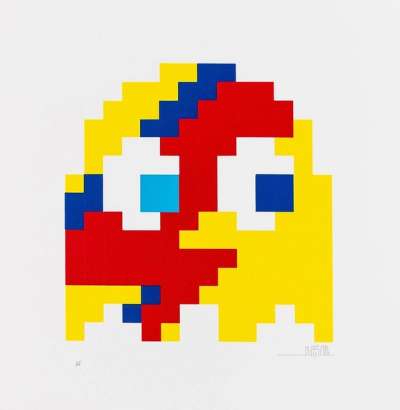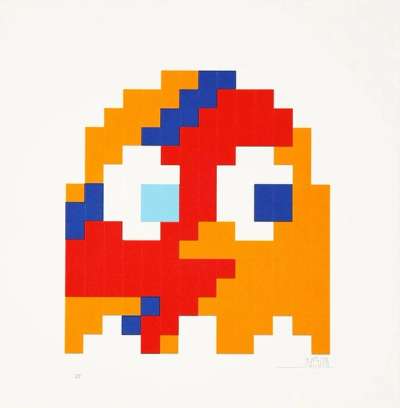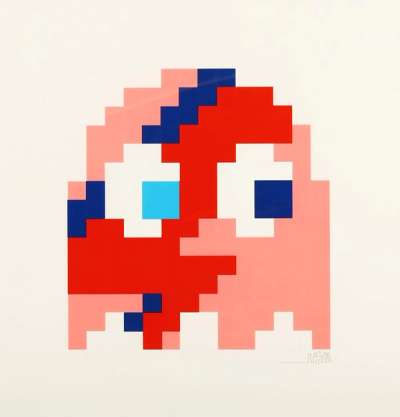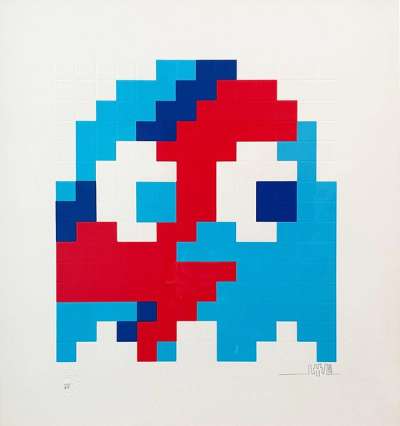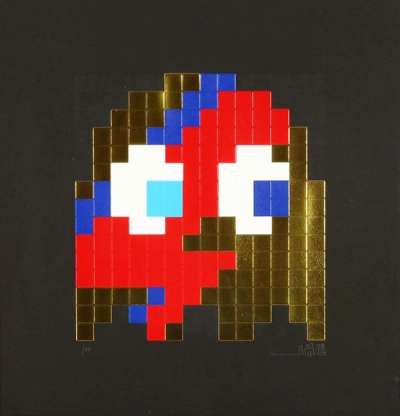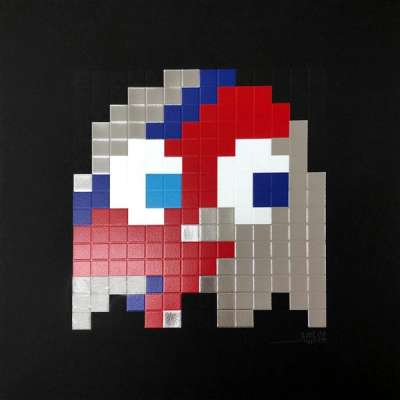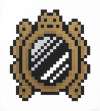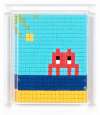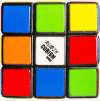Aladdin
Sane
Invader’s 4-part print series, Aladdin Sane, features the artist’s classic retro alien, with a twist. His ceramic mosaics recall retro 8-bit arcade games. Meanwhile, his variation on his classic alien motif— sporting David Bowies’ lightning makeup—references editioning in the gaming world, where players might pay or play to unlock new avatars.
Invader Aladdin Sane For sale
Aladdin Sane Market value
Auction Results
| Artwork | Auction Date | Auction House | Return to Seller | Hammer Price | Buyer Paid |
|---|---|---|---|---|---|
 Aladdin Sane (blue) Invader Signed Print | 9 Jul 2025 | Bonhams Knightsbridge | £6,800 | £8,000 | £10,000 |
 Aladdin Sane (pinky) Invader Signed Print | 28 May 2022 | SBI Art Auction | £14,450 | £17,000 | £20,000 |
 Aladdin Sane (yellow) Invader Signed Print | 21 Jul 2020 | Forum Auctions London | £5,100 | £6,000 | £7,500 |
 Aladdin Sane (orange) Invader Signed Print | 2 Oct 2019 | Tate Ward Auctions | £3,528 | £4,150 | £5,500 |
 Aladdin Sane (gold) Invader Signed Print | 6 Dec 2018 | Chiswick Auctions | £5,100 | £6,000 | £8,000 |
Sell Your Art
with Us
with Us
Join Our Network of Collectors. Buy, Sell and Track Demand
Meaning & Analysis
A playful 4-part print series by Invader, Aladdin Sane combines the artist’s classic retro motif with a kitsch David-Bowie twist.
Having risen to fame in the 1990s, Invader occupies the podium in the Street Art scenery, to the point that Banksy included him in his documentary Exit Through the Gift Shop in 2010. Invader’s best-known pieces are admittedly the coloured tile mosaics ‘Space Invaders’, which are part of a large-scale worldwide project instantly recognisable across the globe. In the project, begun in 1998, Invader quite literally brings to life and into the real world the famous characters of the Taito Japanese video game, who now are part of collective imagery and nostalgically bring the viewer back to the beginnings of digital design and the distinctive space of the arcade. Through his mosaics, which work to physically recreate the digital process of pixelation and virtualisation of the image then glued to the city walls, Invader invades neuralgic points of densely-populated cities. In doing so, he not only stages a fun treasure-hunt for the viewer but also sheds light on the new forms of visibility and modes of visualising images that have emerged in response to the digital era.
Invader’s is thus a theorisation of the pixelation and virtualisation of the image as the defining contemporary way of experiencing images. Simultaneously, his works embed a critique of the alienation caused by different media, and the disembodiment of reality in favour of the virtual. To respond to this situation, Invader stages a game for the viewer, who, in attempting to uncover all the Space Invaders hidden in different cities across the globe, becomes more aware of the surrounding urban environment now marked by the artist.
